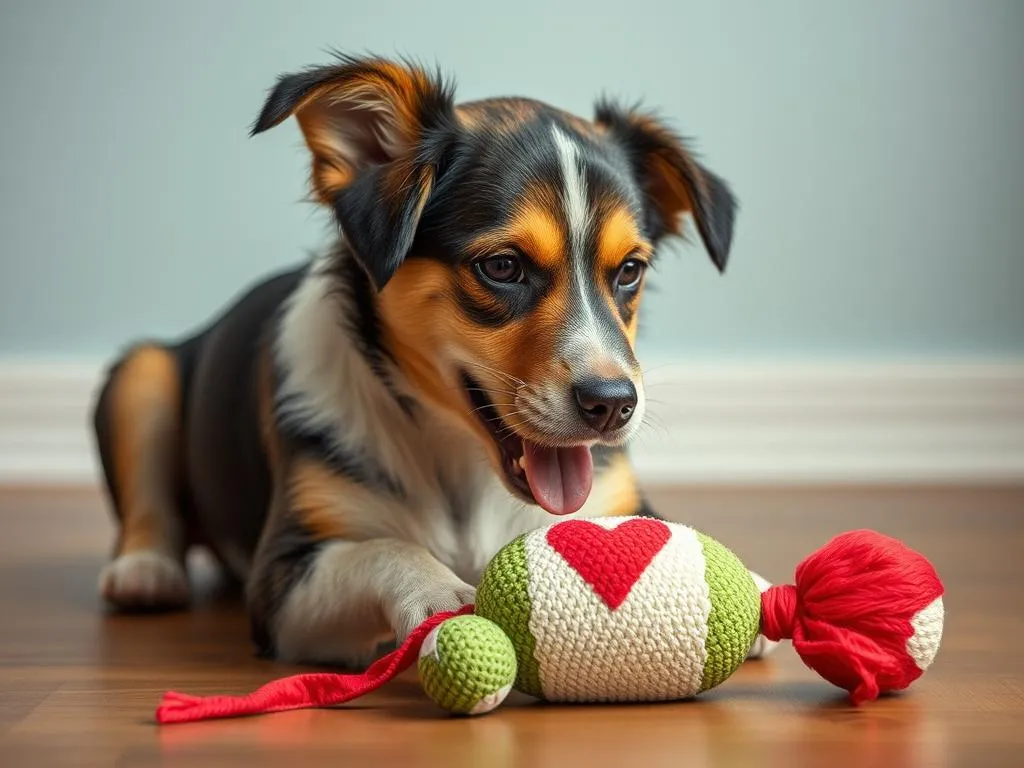
Toys play an essential role in a dog’s life, providing not just entertainment but also mental stimulation and physical exercise. When introducing a new toy, fostering positive associations is crucial for ensuring that your furry friend embraces it with enthusiasm. Here’s a guide on how to make dog love new toy through various strategies and tips.
Understanding Your Dog’s Preferences
Assessing Your Dog’s Play Style
Every dog has a unique play style that reflects their personality. Understanding it can help you select the right toy that resonates with your dog. Common types of play include:
- Fetch: Dogs that enjoy retrieving and chasing after objects thrive with balls or frisbees.
- Tug-of-war: For those that love pulling and wrestling, rope toys or sturdy plush toys are ideal.
- Chewing: If your dog enjoys gnawing, durable rubber or chew toys are essential.
Observe how your dog interacts with their current toys. Do they prefer to chew, chase, or cuddle with them? This information is invaluable when considering new toy options.
Choosing the Right Toy
Once you understand your dog’s play style, selecting the right toy becomes easier. Here are some factors to consider:
- Materials: Depending on your dog’s chewing habits, you might opt for rubber, plush, or rope toys. Durable materials can withstand heavy chewing, while soft toys may be better for cuddling.
- Size: Ensure the toy is appropriate for your dog’s size. Small toys can pose a choking hazard for large breeds, while oversized toys may be challenging for smaller dogs to engage with.
- Interactive vs. Non-Interactive: Interactive toys that dispense treats or require your dog to solve puzzles can keep them mentally stimulated, while non-interactive toys are perfect for solo play.
Preparing for the Introduction of a New Toy
Timing the Introduction
Choosing the right moment to introduce a new toy is crucial. Ideally, do this after a walk or during playtime when your dog is energized and ready to engage. Avoid distractions by ensuring the environment is calm and focused on the new toy.
Creating a Positive Environment
Setting the scene for a positive introduction can significantly impact your dog’s reaction. Consider the following:
- Quiet Space vs. Play Area: If your dog is easily distracted, introduce the toy in a quiet area where they can focus. Play areas are great for more active introductions.
- Reducing Stress Factors: Noise, unfamiliar people, or other pets can distract or stress your dog. Ensure the space is calm and comfortable.
Strategies to Make Your Dog Love the New Toy
Engaging the Dog’s Senses
To entice your dog to explore the new toy, engage their senses. Here are some effective techniques:
- Using Treats or Kibble: Hide treats inside or near the toy to stimulate curiosity. This encourages your dog to investigate and interact with it.
- Incorporating Familiar Scents: Rubbing the toy with a piece of your clothing can make it smell familiar and inviting to your dog, helping them feel more comfortable.
Interactive Play Techniques
Demonstrating how to use the toy can encourage your dog to engage with it. Here are some interactive play ideas:
- Tossing and Chasing: For fetch toys, throw the toy a short distance to get your dog excited about chasing it. Gradually increase the distance as they become more comfortable.
- Tugging: If you’re using a tug toy, engage in a friendly tug-of-war to show your dog how to play with it. Make it a fun and rewarding experience.
Positive Reinforcement
Positive reinforcement is key to making your dog love their new toy. Here’s how to implement this strategy:
- Rewarding Interest: Whenever your dog shows interest in the new toy—sniffing, playing, or even just looking at it—offer treats and praise. This builds a positive association.
- Creating a Routine: Establish a playtime routine that includes the new toy. Consistent engagement will help your dog develop a fondness for it.
Troubleshooting: What if Your Dog Doesn’t Like the Toy?
Assessing the Situation
If your dog shows disinterest or fear towards the new toy, it’s important to assess the situation. Look for signs such as:
- Backing Away: If your dog retreats from the toy, they may find it intimidating or unappealing.
- Ignoring the Toy: A lack of curiosity or engagement can indicate that the toy isn’t appealing.
Consider evaluating your toy choice based on your dog’s preferences. It may not be the right fit for their play style.
Alternatives to Consider
If the new toy doesn’t spark joy, don’t despair! Here are some alternatives:
- Trying Different Types of Toys: Experiment with various materials, sizes, and interactive features until you find something that resonates with your dog.
- Engaging in Other Activities: Sometimes, your dog may prefer other forms of play. Explore activities like fetch with existing toys or even engaging them in a game of hide and seek.
Incorporating the New Toy into Daily Life
Establishing a Play Routine
Creating a consistent play routine can help your dog become accustomed to their new toy. Here are some suggestions:
- Suggested Schedules for Playtime: Aim for short, frequent play sessions throughout the day, allowing your dog to build excitement around the new toy.
- Balancing New Toy with Existing Favorites: Don’t forget about your dog’s current toys. Rotating toys can keep the play experience fresh and exciting.
Monitoring Playtime
As your dog becomes accustomed to the new toy, it’s important to monitor their playtime. This ensures safety and longevity of the toy:
- Keeping an Eye on Wear and Tear: Regularly check the toy for signs of damage or wear. Discard any toys that pose a choking hazard.
- Rotating Toys: To maintain interest, rotate toys regularly. This keeps playtime engaging and exciting for your dog.
Conclusion
In conclusion, making your dog love a new toy involves understanding their preferences, carefully choosing the right toy, and creating a positive introduction. Engaging their senses, using interactive play techniques, and incorporating positive reinforcement are essential strategies that can foster a strong bond between your dog and their new toy.
Don’t forget to troubleshoot if your dog isn’t showing interest, and consider incorporating the toy into their daily routine to enhance their play experience. The joy and benefits of play for your dog’s mental and physical well-being are immeasurable, so take the time to experiment and observe what works best for your furry friend.
Encourage your dog to explore, play, and enjoy, and watch as they develop a love for their new toy!









